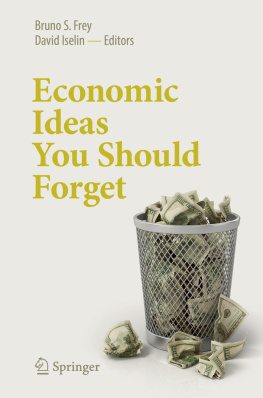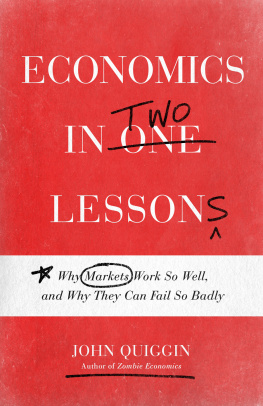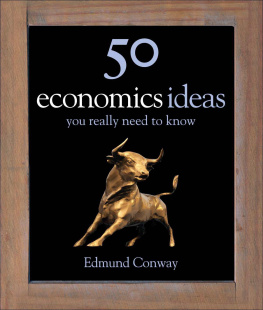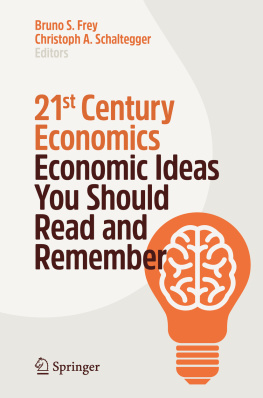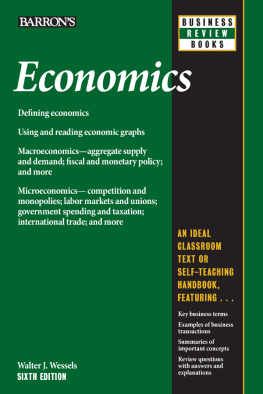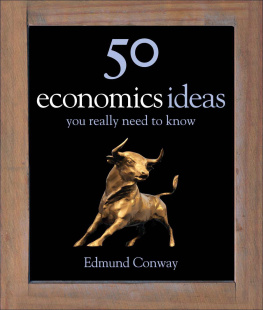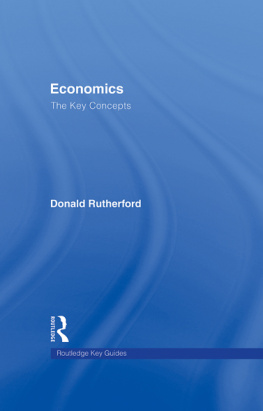Epilogue
Through Neros journey of growing his business, a ghost emoji like Keynes, and with all the ups and downs in the Ghost world, I hope you could learn something about basic Economics. But it does not end here! This is where the interesting bit begins.
You can dive into other specific areas of Economics such as Behavioral, Development, Mathematical and more. Having knowledge of Economics is as important as having knowledge of any other Science or Social Science. The basic concept of scarcity makes one realize the importance of protecting the resources of planet; the importance of time and in some cases, the importance of opportunity.
I am thrilled that you have already taken the first step towards learning Economics, and hope that you would light heartedly (if not as a straight up PhD!) include its lessons in your daily life.

Notion Press
No.8, 3 rd Cross Street,
CIT Colony, Mylapore,
Chennai, Tamil Nadu 600004
First Published by Notion Press 2021
Copyright Charvi Shukla 2021
All Rights Reserved.
eISBN 978-1-63714-731-3
This book has been published with all efforts taken to make the material error-free after the consent of the author. However, the author and the publisher do not assume and hereby disclaim any liability to any party for any loss, damage, or disruption caused by errors or omissions, whether such errors or omissions result from negligence, accident, or any other cause.
While every effort has been made to avoid any mistake or omission, this publication is being sold on the condition and understanding that neither the author nor the publishers or printers would be liable in any manner to any person by reason of any mistake or omission in this publication or for any action taken or omitted to be taken or advice rendered or accepted on the basis of this work. For any defect in printing or binding the publishers will be liable only to replace the defective copy by another copy of this work then available.
Foreword
When I started to learn economics, I would always get scared thinking that it is complicated and requires mugging up definitions. I always struggled with understanding the business sections of newspapers and magazines. Then, in the summer of 2019, I got the opportunity to take the Harvard summer course in Principles of Economics. It was taught by Professor Daron Acemoglu from MIT, Professor John A-List from the University of Chicago, and Professor David Laibson from Harvard University. They explained ideas in a simple, straightforward, and intuitive manner. That is from where I got the inspiration to write this book. Economics must be made accessible to everyone and the only way to do that is to make it less daunting, as some may call it.
Economics is not some sort of a complex evil monstrosity with Multivariable Calculus being the only tool that makes it useful in real-life scenarios. Economics is essentially based on reasoning and logic. Simply put, economics is a social science that studies how people interact with things of value. There are multiple economic agents who interact and try to optimize. They are basically doing whats best for thembeing logical. All the other complicated concepts of economics stem from logic. Logic defines strict principles of validity in terms of rules. These rules can be enumerated in the language of logic. The syllogism, If its sunny, Ill go to the mall. Its sunny. Ill go to the mall, can be formalized as the rule If P implied Q, and Q holds, then P holds.
This means that if one is able to reason with an open and free mentality, understanding economics would become incredibly easy. That is the aim of this book. To help you reason economically. To help these basic concepts sink in. Any other concept can be built on top of this.
Starting from the core of scarcity and choice, we would go on to understand the laws of demand and supply. From here, different market structures and types of firms would be analyzed. These can then be observed in real-life scenarios. For instance, one would be able to realize how a sabzi mandi is a close example of a perfectly competitive market while the toothpaste industry is an oligopoly. To make matters more interesting, a little bit of game theory (and, obviously, prisoners dilemma) is included in the book. After learning about the producers viewpoint of economics, the consumers perspective is understood in the Utility and Choice Theory. This is the part where economics is about you .
The macroeconomic theory section is what will help you understand the business section of a newspaper. Once you know about countercyclical policies and the RBIs interest rates, you would actually be able to make sense out of what Nirmala Sitharaman and Shashikanata Das are doing up there.
It is important to never be daunted by the mere idea of something. Once you try it out, you will be free to make opinions about it. Try out economics.
To my family Mom, Dad, Atharva
My friends Anandi, Sia
Chapter 2
LAW OF DEMAND AND SUPPLY
Law of Demand
Jessis mother gives her pocket money every month. Jessi loves to eat ice cream and spends most of her pocket money on ice cream. Last month, each ice cream used to cost $4, which meant that she bought 2 ice creams. But this month, the ice cream parlor is having a sale and each ice cream costs only $3 now. This means that she will purchase three ice creams this time (and hopefully not get diabetes). A couple of months later, she goes on vacation and finds a fancy ice cream shop that sells one ice cream for $6! She says, Wait, this is crazy. Im not going to waste money like that! And so, she doesnt get any.
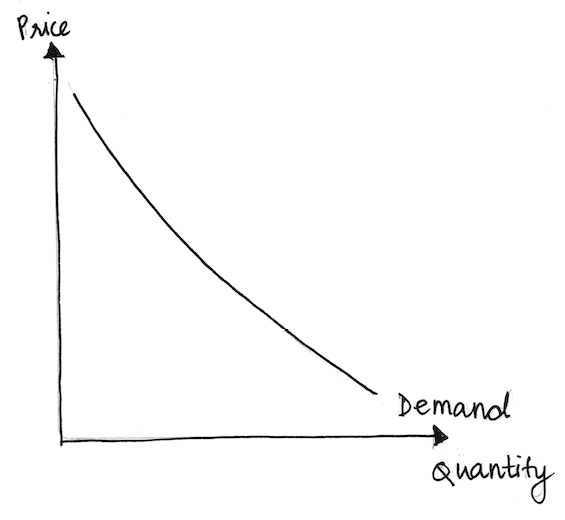
If we list down the different prices and the corresponding quantities of ice cream that she buys, we will discover an inverse relationship between price and quantity. This is because when products are more expensive, either people are not willing to pay such a high price or they dont have the amount of money required to purchase the product. It is important to note that the want and demand are not the same, and therefore, must not be confused. Demand can be defined as the willingness and ability of a person to purchase a product. Whereas wants can be of anything and whether or not one can afford the product is irrelevant. I can sit in my house wanting a Tesla, but that will not be counted as demand for a Tesla because I cannot afford it.
A table containing price and quantity demanded is called a demand schedule. A demand curve is obtained when price is plotted on the y-axis and quantity demanded is plotted on the x-axis. It is a pictorial representation of the law of demand.


